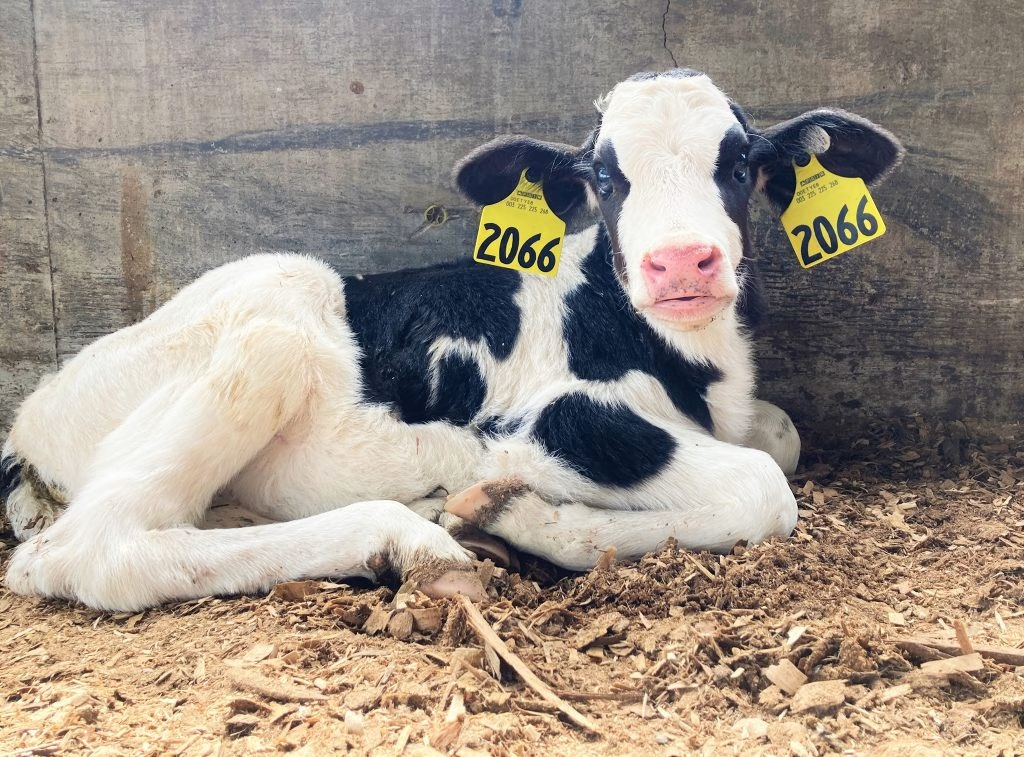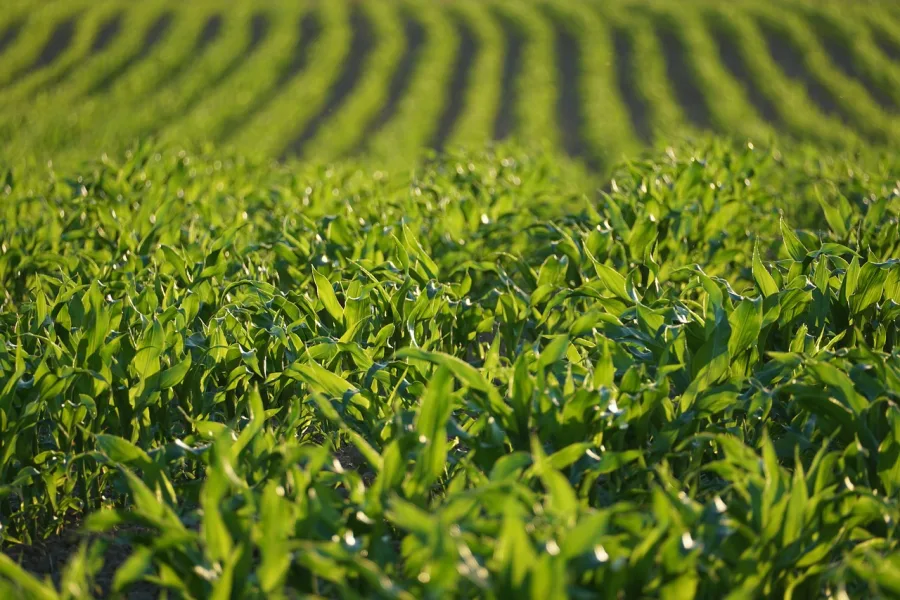Enroll in the free “Adopt a Cow” program by Sept. 15 to bring interactive dairy farm lessons to your classroom. Ready to connect students with agriculture?

Imagine your students’ faces lighting up as they receive video updates showcasing the calf they’ve ‘adopted’ from a real dairy farm, learning firsthand about its growth and the hardworking farmers behind the scenes. This is the reality of Discover Dairy’s ‘Adopt a Cow’ program. For the 2024-25 school year, enrollment is open from May 1 until September 15, 2024. This innovative, year-long educational initiative provides immersive lessons that seamlessly fit into in-person and virtual classrooms, offering an enriching experience that uniquely bridges the gap between the farm and the classroom.
Launched with a Visionary Outlook: Bridging Classrooms and Dairy Farms
Launched with a visionary outlook, the ‘Adopt a Cow’ program is designed to be inclusive, reaching diverse educational settings and engaging more than 39,000 classrooms, homeschool families, library groups, and organizations from all 50 states and 38 countries. Opening enrollment on May 1, 2024, for the 2024-25 academic year, this initiative offers a comprehensive look into dairy farms across the United States. It’s not just an educational moment but a transformative journey, impacting over 1 million students last year alone. Whether in rural or urban areas, students of all ages can experience dairy farming through this innovative program, ensuring everyone feels welcomed and included.
Its interactive elements set the ‘Adopt a Cow’ program apart. Each classroom is paired with a specific calf, turning a distant concept into a tangible reality. Regular updates in photos, videos, and activity sheets allow students to witness their calf’s development throughout the school year. The program also features live virtual chats and farm tours, providing a unique opportunity for students to interact in real-time with dairy farmers, fostering a sense of connection and engagement.
The curriculum goes beyond observation. Immersive, hands-on activities align with Common CORE Math, Reading, and Science standards. This multi-faceted approach ensures students understand the dairy industry, the journey of food from farm to table, and the broader economic factors involved. The ‘Adopt a Cow’ program creates a memorable educational experience, linking agricultural practices to everyday life.
United by Mission: The Backbone of the ‘Adopt a Cow’ Program
The Adopt a Cow program thrives through the support of various esteemed donors and organizations. Key partners include the American Dairy Association Northeast, American Dairy Association Indiana, Midwest Dairy, The Dairy Alliance, Dairy Farmers of Wisconsin, Dairy Management West, Dairy West, New England Dairy, Dairy Farmers of Washington, American Dairy Association Mideast, Dairy Council of Florida, United Dairy Industry of Michigan, Maine Dairy and Nutrition Council, and Oregon Dairy Council. These partners provide essential resources, outreach, and expertise, ensuring a seamless connection between classrooms and dairy farms. Their collective effort delivers a rich educational experience, deepening students’ understanding of the dairy industry and its vital role in the food system.
Firsthand Experiences: Bringing Agriculture Alive in the Classroom
“My students love seeing the photos and videos of our adopted calf. It brings learning to life in a way textbooks never could,” shared Sarah Mitchell, a third-grade teacher from Texas. “This program educates them about the dairy industry and instills a sense of responsibility and care for animals.”
Mark Blake, a fifth-grade teacher from Ohio, remarked, “The Adopt a Cow program has transformed our understanding of agriculture. My students eagerly anticipate the bi-monthly updates. The virtual farm tours are incredibly immersive, and the direct interaction with farmers bridges the gap between the classroom and the farm.”
Students, too, have enthusiastic responses. “I love watching our calf grow up. It’s like having a pet that we all care for together,” said Emily, a fourth-grade student. “Learning about where milk and cheese come from is fun, and I tell my parents about our calf every week.”
High schools also find value in the program. Jessica Lee, a biology teacher in New York City, noted, “Introducing my students to the Adopt a Cow program has been eye-opening. They get a firsthand look at the science behind dairy farming, from genetics to nutrition. It’s a real-world application of what we study in class, sparking interest in agriculture and food sciences careers.”
Reflecting on the program’s adaptability, a homeschool parent, Lauren Carter, stated, “The Adopt a Cow program has been a wonderful addition to our curriculum. It’s flexible enough to fit into our study plans, and the real-world connection makes learning more relatable and interesting. It has truly enriched our educational journey.”
Effortless Enrollment: Making ‘Adopt a Cow’ Accessible to All Classrooms
Enrollment in the Adopt a Cow program is straightforward and designed for easy classroom integration. The sign-up period, open from May 1 to September 15, 2024, offers ample time for educators and parents to register. To enroll, visit the official Discover Dairy Adopt a Cow program page and complete the user-friendly online form.
Once enrolled, participants will receive an introductory update in the fall, detailing their adopted calf and providing bi-monthly updates with suggestions on incorporating the Discover Dairy curriculum into lesson plans. This ensures a comprehensive educational experience for both virtual and in-person learning environments.
For more information or assistance, contact the Dairy Excellence Foundation at 717-346-0849 or email Brittany Snyder at bsnyder@centerfordairyexcellence.org. This direct communication line promptly addresses all queries, enhancing the program experience.
Comprehensive Educational Resources: Aligning Learning with Real-World Dairy Insights
Discover Dairy’s “Adopt a Cow” program provides a robust educational material suite to enrich student learning. These resources align seamlessly with Common Core Math, Reading, and Science standards, ensuring relevance and rigor. Students comprehensively understand the dairy sector and its processes through photos, video updates, and activity sheets. Interactive lessons and hands-on activities engage critical thinking and analytical skills, meeting educational benchmarks effectively. For example, Math lessons may use real-data measurements from calf growth, while Science activities explore biological processes like digestion and milk production. Reading assignments enhance comprehension through contextual learning about dairy farms. This integrated approach helps students meet academic standards while fostering awareness of the agricultural industry’s everyday relevance.
Virtual Bridges: Real-Time Farm Tours and Chats Fuel Educational Connections
One of the pivotal elements of the Adopt a Cow program is its live virtual chats and farm tours. These digital interactions bring the farm experience directly into the classroom, allowing students to connect in real time with dairy farmers. Through these virtual sessions, students can meet their adopted calves, tour the farm, and ask questions about milk production, cow care, and daily farm operations. This live, interactive format personalizes the learning experience and deepens students’ understanding of how dairy products reach their tables.
Facilitating direct conversations with farmers empowers students to engage actively and inquisitively, making agricultural education accessible to urban and rural classrooms. These virtual components enhance the curriculum by combining theoretical knowledge with practical insights, enriching the student’s learning journey.
Global Impact: Expanding Horizons with the ‘Adopt a Cow’ Program
Since its inception, the Adopt a Cow program has reached over 39,000 classrooms across all 50 states and 38 countries. Welcoming both urban and rural schools, this initiative enriches students’ educational experiences regardless of their background. The program’s broad appeal underscores its capacity to bring the agricultural world into classrooms globally.
The Bottom Line
Discover Dairy’s “Adopt a Cow” program integrates agricultural awareness into classrooms worldwide, connecting students with the lifecycles of dairy farms and enhancing their understanding of food origins, agricultural practices, and economic systems. Students gain a comprehensive look at dairy farming through firsthand insights, photos, video updates, and curriculum-aligned activities meeting Common CORE standards in Math, Reading, and Science. The program bridges urban and rural landscapes, fostering empathy and respect for food production. With the September 15, 2024 enrollment deadline approaching, now is the perfect time to sign up. Visit www.discoverdairy.com/adopt or contact the Dairy Excellence Foundation at 717-346-0849. Share this opportunity to extend its reach and impact, cultivating informed, curious learners through the “Adopt a Cow” program.












